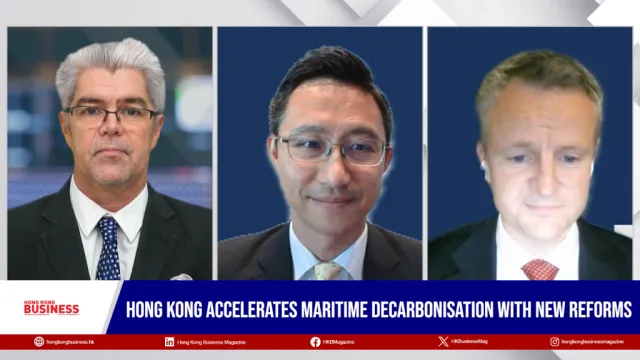Keeping ‘business as usual' in the face of disruptive threats
By Nancy YipHong Kong topped the list as Asia’s most natural disaster-prone city in 2015, according to the Sustainable Cities Index. A few years have passed by, but business risks caused by disasters, such as storms and floods, have only expanded. Last September, Super Typhoon Mangkhut has caused damages and broken windows of even grade-A commercial buildings, including two of the city’s highest structures, International Finance Centre and International Commerce Centre. With over 60,000 reports of fallen trees and more than 600 road blockages , traffic was largely disrupted and so was business operations.
Whilst Hong Kong’s financial industry is required by the Monetary Authority to have a business continuity plan in place, majority of the business sector has not been active in guarding themselves against these business risks. There seem to be a common fallacy that “if workplace destruction has never happened to us, it will never happen to us.”
With climate change as the backdrop, it is expected more severe typhoons are to come in the coming years, resulting in threats to workplace destruction that can easily escalate into wider corporate crisis.
The stakes at hand
Daily operations of businesses in any sector will bear the outright brunt of workplace destruction. The loss of the workplace interrupts operations and services, leading to financial losses to the organisation from the loss of clients or even regulatory penalties. Experts have said that if Super Typhoon Mangkhut has caused the city’s entire workforce to pause work the day after it passed, the economic loss could amount to up to$7.3b.
Financial loss may seem short-term, but failure to manage workplace recovery risks can snowball into extended brand and reputation crises. Customer confidence can be held at stake if businesses cannot guard themselves against continuity risks, which is especially important to certain businesses such as financial institutions, legal firms and consultancies.
With a robust and practical workplace recovery solution set up in advance, there’s a much higher chance of walking away from disaster risks unharmed.
Why traditional solutions are not enough
Traditionally, organisations employ a “single static site” solution, where employees will be moved to a backup site when the main office can no longer be in use. This approach, however, is vulnerable to instances such as city-wide transport disruptions or extreme weather conditions. With the lack of flexibility, businesses adopting a single site solution will likely still have to battle against the same workplace risks which caused the initial disruption.
On the other end of the spectrum, working from home has also been increasingly accepted as a workplace recovery solution. While more businesses are encouraging “home office” as typhoons hit, a sofa or a dining table at home is far from an ideal place to work and can easily lead to a slip in productivity. According to the IWG 2019 Global Workspace Survey, 3 in 5 of APAC home-workers said they are easily distracted by family members at home. Respondents also named other nuisances, such as the absence of office supplies and equipment, slow or unreliable internet connection and family and pets disturbing work telephone calls, further proving that home is no replacement for an office.
The ideal recovery strategy
If adopted wisely, an inclusive recovery plan is a low-cost investment that effectively shield businesses against workplace disruption risks. On that account, decision makers should ensure their recovery strategy is both practical and employee-centric. For instance, certain solutions in the market offer workstations but do not guarantee seating. Businesses might think they have a comprehensive backup plan in place, but only come to find out that all the seats in that recovery center have already been taken.
Employee participation is also critical when it comes to the success of workplace recovery. Organisations are advised to consider all employee-related aspects as they outline their recovery strategy, for instance giving employees a choice from various work locations, allowing them to give equal importance to family needs during a wide area crisis incidents such as typhoon.
According to a recent global study by Regus, a staggering 73% of respondents agreed that flexible workspace solutions have helped mitigate risks that could threaten the flow of business operations. The ideal recovery plan varies from company to company, but no business can be safe without one. As Benjamin Franklin puts it, “by failing to prepare, you are preparing to fail.”




















 Advertise
Advertise






